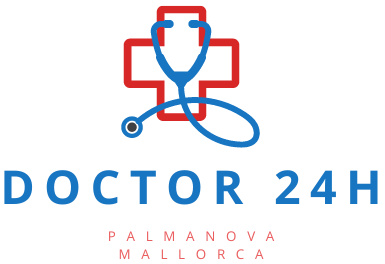When it comes to our children, nothing is more alarming than facing a medical emergency. Paediatric emergencies can happen unexpectedly and require immediate attention and specialized care. Understanding what constitutes an emergency and how to respond is critical for parents, caregivers, and healthcare professionals alike.
The most common pediatric emergencies
Childhood is a time of exploration and, occasionally, accidents. Some of the most frequent pediatric emergencies involve respiratory distress, seizures, allergic reactions, injuries from falls, and poisoning. Each of these scenarios can be terrifying, but knowing the signs and how to respond can save precious time and improve outcomes for the child.
Respiratory problems, for instance, are particularly concerning in young children, as their airways are smaller and more susceptible to blockage. Symptoms such as wheezing, rapid breathing, or a change in color should prompt immediate medical attention. Ingestion of harmful substances is another common issue, requiring rapid assessment and treatment to prevent serious complications.
Injury from falls and trauma can result in fractures, concussions, or other serious harm. Quick assessment and stabilization are key. Seizures, while often frightening to witness, typically require protective measures to prevent injury during the event and medical evaluation afterward.
What are the emergency conditions for pediatrics?
Pediatric emergency conditions range from life-threatening illnesses to injuries requiring prompt care. Infections, such as meningitis or sepsis, can progress rapidly in young children. Equally critical are conditions like appendicitis or diabetic ketoacidosis, which may present with more subtle symptoms initially but can quickly escalate.
It’s essential for parents and caregivers to recognize symptoms of pediatric emergencies such as high fever, severe abdominal pain, uncontrolled bleeding, or altered consciousness. These symptoms can indicate an underlying emergency condition that necessitates immediate evaluation by a pediatric healthcare team.
Handling pediatric emergencies effectively often involves not just one condition but a combination of factors that can complicate diagnosis and treatment. It’s why pediatric emergency care practices are tailored specifically for the physiological differences of children.
What are the acute pediatric emergencies?
Acute pediatric emergencies refer to sudden and severe medical conditions that require immediate action. These can include acute asthma attacks, diabetic emergencies, severe infections, and traumatic injuries. Understanding these conditions and their rapid progression is vital for anyone involved in pediatric care.
Pediatric trauma management is an integral part of dealing with acute emergencies. This involves not only the physical treatment of injuries but also addressing the emotional and psychological needs of the child and family.
Another aspect of acute emergencies is the need for pediatric resuscitation. The approach to resuscitation in children varies significantly from adults, with differences in techniques, drug dosages, and the use of equipment.
What is the most common cause of pediatric emergencies?
While there are many causes of pediatric emergencies, respiratory issues are among the most common. Conditions such as asthma, pneumonia, and bronchiolitis can lead to acute respiratory distress, a leading cause of pediatric emergency room visits. Trauma from accidents is another significant cause, highlighting the need for preventative measures and safe environments for children.
Infections are also a common trigger for emergencies in young patients. A child’s developing immune system can make them more susceptible to severe infections, which can deteriorate quickly without prompt medical attention.
Child health experts emphasize the importance of vaccination, proper hygiene, and quick response to emerging symptoms to prevent these emergencies from escalating.
How to prepare for pediatric emergencies?
Preparation can make a significant difference when facing a pediatric emergency. Parents and caregivers can take courses in CPR and first aid specifically tailored for children. Keeping a well-stocked first aid kit and having emergency numbers at hand is also crucial.
Understanding your child’s health history, including allergies and past medical issues, is essential for informing healthcare providers in an emergency. And perhaps most importantly, never hesitate to seek medical help if you suspect your child is in danger.
Being informed about common pediatric emergency care practices and the layout of the nearest pediatric emergency facility can also save valuable time during a crisis.
What are the key differences in treating pediatric emergencies?
Children are not just small adults; they have unique physiological and psychological needs. Key differences in treating pediatric emergencies include the need for smaller medical equipment, different medication dosages based on weight, and specialized training for healthcare providers.
Effective communication with the child and family is also paramount. Providers must be skilled at calming anxious children and explaining procedures in a way that is understandable and reassuring.
Furthermore, the ABCDE method is a systematic approach to the immediate assessment and treatment of critically ill or injured children. It stands for Airway, Breathing, Circulation, Disability, and Exposure/Environment, and is a cornerstone of pediatric emergency care.
How to recognize severe symptoms in children?
Recognizing severe symptoms in children can be challenging, as they may not always be able to communicate what they are feeling. Symptoms to watch for include difficulty breathing, unusual sleepiness or confusion, extreme irritability or pain, persistent vomiting, and rash combined with fever.
Other concerning signs can include a change in skin color, such as becoming pale, patchy, or blue, indicating possible oxygen deprivation. Seizures, a stiff neck, or a refusal to eat or drink should also trigger immediate concern.
Parents have an instinctive sense of their child’s well-being. Trusting these instincts and seeking immediate medical evaluation when something seems off is often the best course of action.
Further Insights into Pediatric Emergencies
Conferences like Pediatric Emergencies 2021, announced by Christopher Flannigan, offer valuable insights into the latest developments in pediatric care. These events often cover wide-ranging topics, from trauma to respiratory emergencies, and are an excellent resource for healthcare professionals and parents alike.
In such events, speakers may discuss case studies, share new research findings, and provide updates on best practices. This continuous learning is essential in a field where early recognition and response can drastically change outcomes for young patients.
Related Questions on Pediatric Emergencies
What are the top 5 pediatric emergencies?
The top five pediatric emergencies typically include respiratory distress, seizures, allergic reactions, injuries from falls, and ingestion of toxic substances. Each requires a different approach to management but shares the commonality of needing rapid and appropriate response.
Healthcare professionals must stay informed on the best practices to handle these emergencies effectively, as prompt treatment can be lifesaving.
What are the emergency conditions for pediatrics?
Emergency conditions for pediatrics range from infections like meningitis to metabolic crises such as diabetic ketoacidosis. Pediatric healthcare teams are trained to recognize and treat these conditions swiftly to prevent long-term harm or fatalities.
Such conditions demand a careful and rapid assessment, often employing the ABCDE method to prioritize treatment based on the severity of the symptoms.
What are the acute pediatric emergencies?
Acute pediatric emergencies are severe, sudden conditions that demand immediate medical action. These include anaphylaxis, severe asthma attacks, significant trauma, acute abdominal conditions like appendicitis, and neurological emergencies such as seizures or meningitis.
Recognizing the signs and symptoms of these acute conditions is crucial for anyone caring for children, from parents to professionals.
What is the most common cause of pediatric emergencies?
The most common cause of pediatric emergencies is respiratory diseases like asthma and bronchiolitis. Other common causes are traumas from accidental injuries, highlighting the importance of preventive measures to ensure child safety.
Infections also rank highly as common causes, underlining the necessity of recognizing symptoms early and seeking prompt medical care.
If you are seeking more detailed information on how to handle common pediatric emergencies, check out this informative video:
In conclusion, understanding and preparing for pediatric emergencies is crucial for ensuring the safety and well-being of children. For expert advice and immediate assistance, consider reaching out to or visiting “Doctor 24 Hours Palamanova Mallorca“. Their dedicated pediatric healthcare team is equipped to handle various emergency situations, providing care when it matters most.

